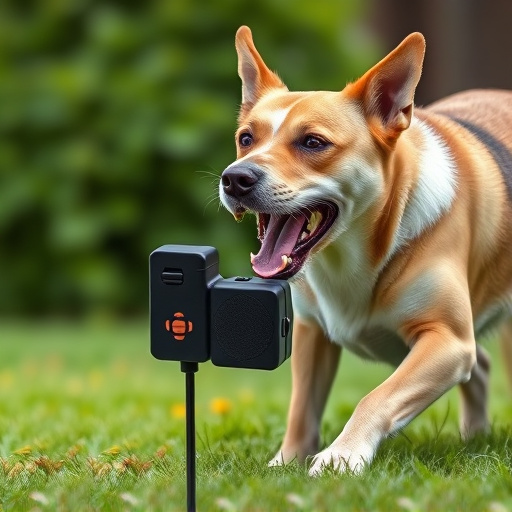To effectively deter unwanted dogs, strategically install a Sonic Dog Repeller along property lines, in high traffic areas like alleys and gates, and on higher ground for maximum range. Focus on frequent canine entry points like fences or gates, regularly test the device's functionality, maintain it with proper upkeep, and consider local regulations to avoid disturbing neighbors. This ensures a peaceful environment for both pets and residents while enhancing personal security without causing harm to animals.
“Personal security has become a top priority, and one innovative solution gaining traction is the personal security dog deterrent device. This article explores an effective yet often overlooked tool—sonic dog repellers. We’ll guide you through understanding their mechanism, choosing the ideal installation spots (including the best locations to install a sonic dog repeller), and weighing the pros and cons. Additionally, we’ll offer practical tips for optimal use and maintenance, as well as alternative security measures to bolster your safety.”
- Understanding Sonic Dog Repellers: How They Work
- Choosing the Right Location for Installation
- Benefits and Drawbacks of Using a Personal Security Dog Deterrent Device
- Best Practices for Effective Use and Maintenance
- Alternatives and Complementary Measures for Enhanced Security
Understanding Sonic Dog Repellers: How They Work
Choosing the Right Location for Installation
When deciding on where to install a sonic dog repeller, it’s crucial to select locations that are strategic and effective in deterring unwanted canine visitors. Fenceline installation is often ideal; mount the device along your property line where dogs are most likely to approach. This ensures continuous coverage without excessively affecting nearby human residents or pets.
Consider areas with high dog traffic, such as near alleys, gates, or common entry points. Additionally, elevation can play a role; installing the repeller on higher ground allows for a broader range of protection and better projection of the sonic signal, making it more effective in deterring dogs from entering your space.
Benefits and Drawbacks of Using a Personal Security Dog Deterrent Device
Personal security dog deterrent devices, such as sonic repellers, offer a unique approach to enhancing home safety. One of the primary benefits is their non-lethal and humane nature; these devices use high-frequency sound waves to deter potential intruders without causing harm. This is particularly appealing for those seeking an alternative to traditional alarm systems or firearms. Additionally, they can be easily installed in various locations, including doors, windows, or gardens, providing a multi-faceted security solution. The sonic repeller acts as a powerful psychological barrier, warning off would-be thieves and giving homeowners peace of mind.
However, there are some drawbacks to consider. These devices may not be effective against determined criminals who wear ear protection or are unfamiliar with the technology. Moreover, while they can startle intruders, they might not always prevent a break-in, serving primarily as a deterrent for casual thieves. Maintenance and battery life are also factors; regular testing and replacement of batteries are essential to ensure continuous protection. Despite these challenges, when used in conjunction with other security measures, personal security dog deterrents like sonic repellers can be an excellent addition to any home’s defense strategy, especially in areas where installation of a physical barrier is not feasible or aesthetically desirable, such as where to install a Sonic Dog Repeller (e.g., balconies, patios).
Best Practices for Effective Use and Maintenance
To ensure the best practices for effective use and maintenance of a personal security dog deterrent device, such as a sonic dog repeller, consider strategic installation locations. The where to install Sonic Dog Repeller is crucial for optimal efficacy. Place it in areas where dogs are most likely to approach or intrude, like fences, gates, or entry points. Regularly test the device’s range and functionality to ensure it covers all necessary zones.
Maintenance involves keeping the device clean, ensuring batteries are always charged, and promptly replacing any worn-out parts. Check local regulations regarding use and consider adjusting settings based on feedback from neighbors to avoid unnecessary disturbance. Consistent upkeep will guarantee the device remains a reliable deterrent, enhancing your personal security without causing harm to nearby animals.
Alternatives and Complementary Measures for Enhanced Security
Personal security dog deterrent devices, like sonic repellers, offer a non-lethal yet effective way to protect yourself and your property. When strategically installed in high-risk areas, such as where where to install sonic dog repeller is key, these devices can deter potential threats without causing harm. By understanding their functionality, choosing the right location, and following best practices for use and maintenance, you can enhance your security and peace of mind. Remember, while these tools are powerful, they’re just one piece of a comprehensive home security strategy that may also include alternative measures and complementary security practices.
